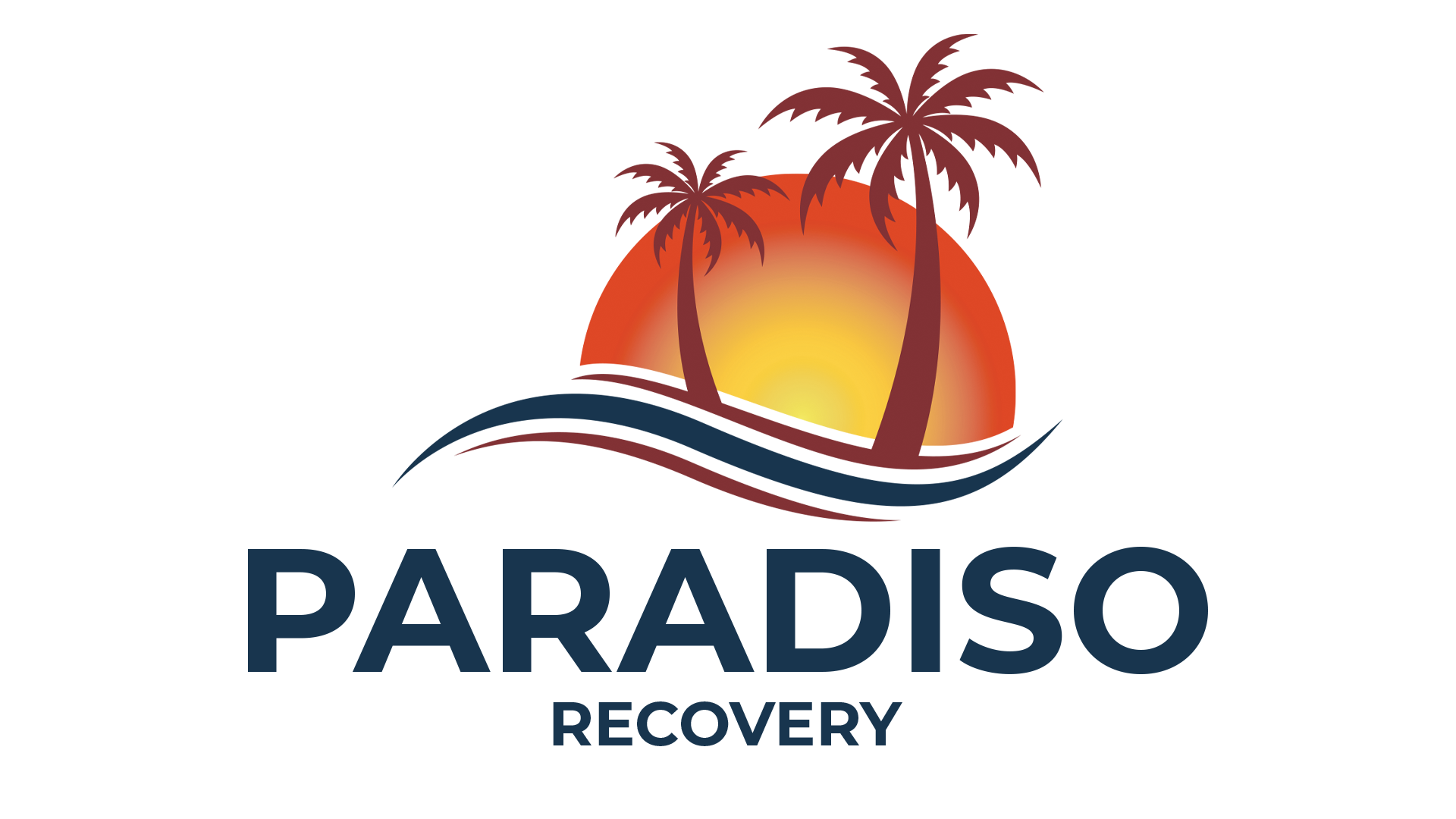Bipolar Disorder and Addiction Treatment in Ventura County, CA
Bipolar Disorder and Addiction Treatment in Ventura County, CA
Bipolar disorder and addiction often occur together, making diagnosis and treatment more complex. Understanding their relationship is crucial for individuals and families navigating this challenging journey.

At Paradiso Recovery, we recognize the unique needs of those facing co-occurring disorders and provide specialized, compassionate care. Treatment is tailored to address both conditions simultaneously in our Ventura County facility.
What is Bipolar Disorder?
Bipolar disorder, formerly known as manic depression, is a mental health condition that causes extreme shifts in mood, energy, and activity levels. Approximately 2.8% of U.S. adults experience bipolar disorder each year. The condition includes three main types:
- Bipolar I disorder: Features manic episodes lasting at least seven days or requiring hospitalization, often followed by depressive episodes.
- Bipolar II disorder: Involves hypomanic episodes (less severe than full mania) alternating with major depressive episodes.
- Cyclothymic disorder: Includes periods of hypomanic and depressive symptoms lasting at least two years.
Addiction, clinically referred to as substance use disorder, is a chronic condition characterized by compulsive drug or alcohol use despite harmful consequences. Approximately 40.3 million people aged 12 or older had a substance use disorder in 2020.
Research consistently shows that bipolar disorder and substance abuse frequently co-occur. Studies indicate that individuals with bipolar I disorder have a lifetime substance use disorder prevalence rate of approximately 65%, while those with bipolar II disorder experience rates at around 37%.
Why Bipolar and Substance Abuse Often Co-occur
The relationship between bipolar disorder and substance abuse involves multiple interconnected factors. The self-medication hypothesis represents one primary explanation. During manic episodes, individuals may use depressants like alcohol to slow down racing thoughts or to calm excessive energy. During depressive episodes, they might turn to stimulants to lift their mood or increase their energy levels. While this approach may provide temporary relief, it can aggravate mental health symptoms and worsen mental health over time.
Shared genetic and neurobiological factors also contribute to this co-occurrence. Research indicates that both conditions involve similar brain circuits related to reward, motivation, and impulse control. Genetic studies suggest that certain genes increase vulnerability to both bipolar disorder and addiction.
Environmental factors can play a significant role in the development of simultaneous addiction and bipolar disorder. Examples of these include:
- Trauma exposure: Childhood trauma or significant life stressors increase risk for both conditions.
- Social environment: Growing up around substance use or having peers who use substances excessively can normalize the experience.
- Stress response: Both conditions can create stress, and poor management of one can result in aggravated symptoms of the other.
- Sleep disruption: Poor sleep patterns can aggravate both mood episodes and cravings for substances.
When bipolar disorder develops first, the emotional instability and poor judgment during mood episodes can lead to substance experimentation and eventual addiction. When substance use begins first, chronic drug or alcohol abuse can trigger mood episodes or worsen existing bipolar symptoms.
Signs of Bipolar Disorder and Substance Abuse
Recognizing the signs of co-occurring bipolar disorder and substance abuse can be challenging, because symptoms often overlap or mask each other. Each condition can make the other more difficult to identify and treat.
Manic Episodes
Mania in bipolar disorder involves elevated mood, increased energy, and often poor judgment. During these periods, individuals may engage in risky behaviors, including excessive substance use. The combination can create particularly dangerous situations.
Common signs during manic episodes include:
- Decreased sleep: Going days with little to no sleep while maintaining high energy
- Grandiose thinking: Believing they can handle more substances than usual or that rules don’t apply to them
- Impulsive spending: Purchasing large quantities, sometimes of alcohol or drugs
- Risky sexual behavior: Often combined with substance use
- Aggressive behavior: Especially when substance use is questioned or restricted
Stimulant drugs like powdered cocaine or methamphetamine can mimic or intensify manic symptoms. This can make it difficult to determine whether behaviors result from the mood episode, substance use, or both. This is why medical professionals often require patients seeking a diagnosis of bipolar disorder to be sober for a certain amount of time.
Depressive Episodes
Depressive episodes in bipolar disorder can result in profound sadness, hopelessness, and loss of interest in activities. Many individuals turn to substances during these periods, attempting to escape emotional pain or regain some sense of normality.
Alcohol is the most commonly used substance during depressive episodes, followed by opioids (prescribed and illicit), cannabis, and prescription medications. But rather than providing relief during these trying periods, substance use typically:
- Worsens depression: Alcohol and other depressants can aggravate mood symptoms.
- Increases isolation: Excessive substance use often leads to withdrawal from supportive relationships.
- Disrupts sleep: Substance use can create cycles where poor sleep worsens both depression and substance cravings.
- Impairs judgment: Masking of symptoms via substances can make it harder to recognize the need for professional help.
The combination of bipolar-based depression and substance abuse can significantly increase suicide risk. This makes it a particularly dangerous combination that may require immediate professional attention.
Can Substance Abuse Cause Bipolar Disorder?
While substance abuse doesn’t directly cause bipolar disorder, the relationship between these conditions is complex and involves several important distinctions.
Substance-induced mood disorders can mimic bipolar disorder symptoms. Certain drugs, particularly stimulants and hallucinogens, can trigger mania-like episodes. These episodes may include elevated mood, increased energy, a decreased need for sleep, and poor judgment — symptoms that closely resemble bipolar mania.
However, substance-induced symptoms typically differ from true bipolar disorder in a few important ways:
- Timing: Symptoms appear primarily during intoxication or withdrawal, not in “swings” recognizable to bipolar disorder
- Duration: Episodes usually resolve after the substance clears the system
- Pattern: Mood changes directly correlate with substance use patterns
The concept of “kindling” suggests that repeated substance use may lower the threshold for mood episodes in individuals vulnerable to bipolar. This theory proposes that chronic drug or alcohol use can make the brain more sensitive to mood swings, potentially triggering bipolar episodes in people with genetic predisposition.
Long-term substance use can also cause lasting brain changes that can affect mood regulation. While this doesn’t create bipolar disorder in people without genetic vulnerability, it can aggravate existing mood instability or trigger episodes in those already at risk.
Accurate diagnosis requires careful evaluation during periods of sobriety. Mental health professionals typically wait until substances have completely cleared the person’s system before making a definitive diagnosis, as this allows them to observe which symptoms persist without any chemical influence.
Contact us right now for a free, confidential insurance verification
Free Insurance Verification
Effective Treatments for Bipolar Disorder and Drug Use
Treating co-occurring bipolar disorder and addiction requires an integrated approach that addresses both conditions simultaneously. Research consistently demonstrates that an integrated treatment produces better outcomes than treating each condition separately.
Medication Management
Medication plays a crucial role in stabilizing mood and reducing substance cravings. Mood stabilizers help to prevent manic and depressive episodes. These medications can reduce the likelihood of using substances to manage mood symptoms.
Close medical supervision remains essential because some medications commonly used in addiction treatment can interact with mood stabilizers or potentially trigger mood episodes.
Psychotherapy Approaches
Several evidence-based therapies effectively address both conditions. These may include:
- Cognitive Behavioral Therapy (CBT): Helps individuals identify triggers for both mood episodes and substance use. Participants learn coping strategies and develop skills to exercise control over cravings and mood symptoms.
- Dialectical Behavior Therapy (DBT): Focuses on emotion regulation skills, which are particularly valuable for people with bipolar disorder. DBT focuses on teaching distress tolerance techniques that can prevent both mood episodes and substance use relapses.
- Integrated Group Therapy: Brings together individuals with similar co-occurring conditions. Group members share experiences and learn from each other while developing social support networks of people that understand both challenges.
- Family therapy: Involves loved ones in the treatment process, helping them understand both conditions and learn how to provide support during recovery.
Why Bipolar and Substance Abuse Often Co-occur
The relationship between bipolar disorder and substance abuse involves multiple interconnected factors. The self-medication hypothesis represents one primary explanation. During manic episodes, individuals may use depressants like alcohol to slow down racing thoughts or to calm excessive energy. During depressive episodes, they might turn to stimulants to lift their mood or increase their energy levels. While this approach may provide temporary relief, it can aggravate mental health symptoms and worsen mental health over time.
Shared genetic and neurobiological factors also contribute to this co-occurrence. Research indicates that both conditions involve similar brain circuits related to reward, motivation, and impulse control. Genetic studies suggest that certain genes increase vulnerability to both bipolar disorder and addiction.
Environmental factors can play a significant role in the development of simultaneous addiction and bipolar disorder. Examples of these include:
- Trauma exposure: Childhood trauma or significant life stressors increase risk for both conditions.
- Social environment: Growing up around substance use or having peers who use substances excessively can normalize the experience.
- Stress response: Both conditions can create stress, and poor management of one can result in aggravated symptoms of the other.
- Sleep disruption: Poor sleep patterns can aggravate both mood episodes and cravings for substances.
When bipolar disorder develops first, the emotional instability and poor judgment during mood episodes can lead to substance experimentation and eventual addiction. When substance use begins first, chronic drug or alcohol abuse can trigger mood episodes or worsen existing bipolar symptoms.
How to Get Help for Bipolar Disorder and Addiction in Ventura County
Seeking help for co-occurring bipolar disorder and addiction begins with recognizing when professional intervention becomes necessary. Warning signs include mood symptoms that interfere with daily functioning, substance use that continues despite negative consequences, or difficulty managing both conditions simultaneously.
The assessment process typically involves comprehensive evaluation by mental health and addiction specialists. This may include detailed history-taking, symptom assessment, and sometimes psychological testing in order to accurately diagnose both conditions.
FAQs About Bipolar Disorder and Addiction
Can bipolar medications be safely taken with addiction treatment medications?
Yes, most bipolar medications can be safely combined with addiction treatment medications when properly monitored by healthcare professionals. Close medical supervision helps prevent medication interactions and ensures both conditions receive appropriate treatment.
How long does integrated treatment for bipolar disorder and addiction typically last?
Integrated treatment duration varies based on individual needs, but most programs last several months to over a year. The timeline depends on symptom severity, treatment response, and the development of stable coping skills.
What happens if someone with bipolar disorder relapses during treatment?
Relapse doesn’t mean treatment failure, but rather the need for treatment plan adjustments. Most integrated programs include relapse prevention planning and continue working with individuals to achieve stability in both mood and substance use.
Your Path to Recovery Starts at Paradiso Recovery
Recovery from co-occurring bipolar disorder and addiction is achievable with proper treatment and support. Integrated care that addresses both conditions simultaneously offers the best chance for long-term stability and improved quality of life.
Paradiso Recovery provides specialized dual diagnosis treatment in a supportive, private environment. Our experienced team understands the unique challenges of managing both bipolar disorder and addiction, offering evidence-based treatments tailored to individual needs. Through comprehensive care that includes medication management, therapy, and ongoing support, we help individuals in Ventura County build foundations for lasting recovery. Contact us today to learn more.
